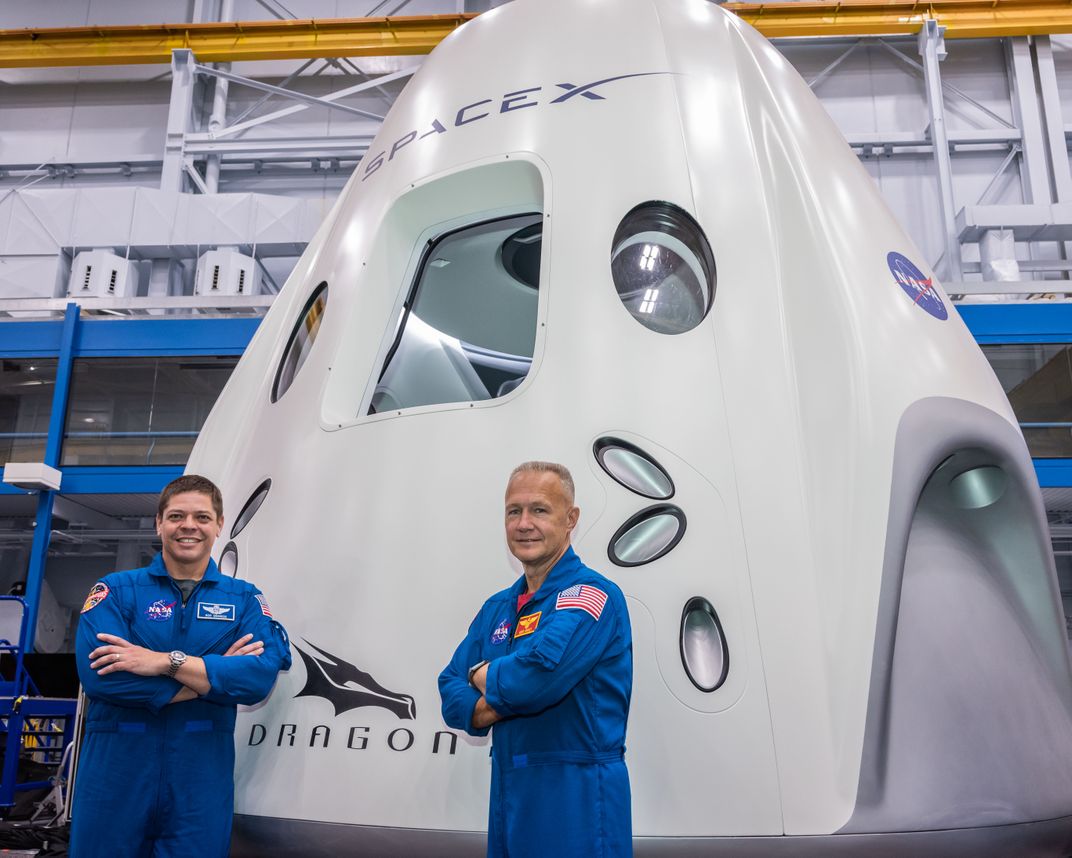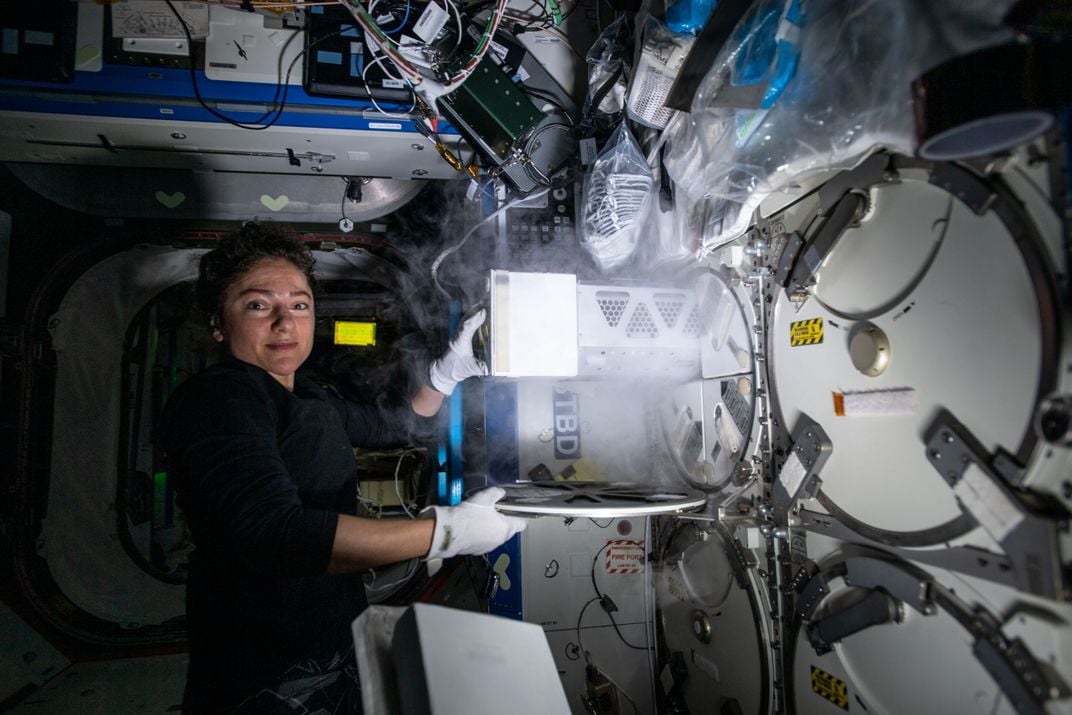Redefining How NASA Gets into Space
On the eve of SpaceX’s first Crew Dragon launch, space history curator Jennifer Levasseur examines how NASA’s relationship with the contractors that build its spacecraft has changed since the first days of human spaceflight.
:focal(1500x1000:1501x1001)/https://tf-cmsv2-smithsonianmag-media.s3.amazonaws.com/blogging/featured/demo2capsule.jpg)
The end of the Space Shuttle program in 2011 signaled a time of change for NASA. Not only because its longest operational vehicle was going out of service, but because going to our permanent home in space, the International Space Station (ISS), would never happen the same way again. For almost a decade, the U.S. space agency relied on the Russian Soyuz spacecraft to take our astronauts to the station, paying millions of dollars to ensure that the onboard research and maintenance would continue without interruption. As NASA planned the construction and use of the Orion spacecraft and Space Launch System (SLS) rocket as a means of going back to the Moon and on to Mars, they also planned for a new way to get to the ISS. That meant a very new way of doing business with a group of successful new space companies, letting the bulk of NASA’s human spaceflight efforts focus on exploration while others kept eyes on space station crew and operations.

Fulfilling NASA’s exploration goals worked generally the same way for the last 60 years. An administration set a goal, like Kennedy’s goal of landing people on the Moon and returning them to Earth by the end of the 1960s. Then NASA solicited bids for a contract to fulfill that goal by constructing a spacecraft, rockets, and other equipment. The agency then received that equipment, like it did the Space Shuttle from Rockwell International (Boeing), and carried out missions using its own staff with support from contractors as needed. This held true for its Mercury, Gemini, Apollo, Skylab, Space Shuttle, and International Space Station programs. Steps towards changing program operations and the way astronauts work began early in the Space Shuttle program with the inclusion of Payload Specialists. These non-career astronauts represented companies or organizations with important work included on the mission, though some passengers were considered “goodwill” crew, symbols of appreciation to other governments or our own congressional members. This guest astronaut program continued until 2003, when Israeli astronaut Ilan Ramon was lost along with the crew of Space Shuttle Columbia.

As the primary work on the ISS turned from construction to research and maintenance, so did the way in which the research was organized. Beginning in 2012, under Congressional mandate for a non-profit organization to manage the science and technology research time of astronauts, the US National Laboratory program altered the path of interactions between NASA and companies, universities, and other organizations. Similarly, changes came starting in 2008 when NASA began exploring the concept of commercial cargo resupply of the ISS, which was realized with Northrup Grumman and SpaceX beginning in 2013. With this increase in commercial involvement came the question: Could NASA contract out even the transportation of astronauts to the station to commercial entities as the agency turned its attention to exploration beyond Earth orbit? In September 2014, NASA did just that, starting with the Commercial Crew Development Program. They awarded contracts to SpaceX and Boeing to develop, build, and operate programs that would carry NASA astronauts to the ISS. With many test flights now completed, the Demo-2 flight of the SpaceX Crew Dragon spacecraft on May 30, 2020, will fulfill the Commercial Crew Program’s first major milestone: taking two astronauts to the ISS.
The major difference between how SpaceX and Boeing work and how the Space Shuttle or Soyuz spacecraft took crews to the ISS is how NASA is involved in the process. Instead of being a customer who received a product to then operate themselves, NASA is more on the sidelines in the case of the Crew Dragon and Starliner vehicles. With six contracted missions each, SpaceX and Boeing will also carry out the mission service side for the first. Converting spaceflight from “goods” contracts to “goods and services” means that NASA personnel are in the role of certifying that all elements of vehicle construction are complete to certain standards, that each company has met safety requirements, and that they have shown evidence of its ability to launch and send a vehicle to the ISS. SpaceX completed these tasks in order to schedule the first crewed launch, Demo-2. Boeing’s orbital test in December 2019 revealed software and other problems that require a retest later in 2020 with potential crew flights in 2021.
Success of the Demo-2 flight means NASA can once again provide crewmembers for the ISS directly from American soil, a necessity steeped in the Cold War competition with the Soviet Union. These crewmembers will continue the science research and maintenance of the station for at least the duration of the contracts with these commercial providers. Though this flight is only a test and will carry a complement of two passengers who are not expected to become a formal part of the current Expedition 63 crew aboard the ISS, it signals the beginning of regular rotations of U.S. and other partner nations crewmembers launching from Florida starting in the summer of this year. This does not end the need for crew to launch from the Russian launch pad in Baikonur, Kazakhstan, but it will reshape the relationship between the U.S. space agency and ISS operations. While still many years in the future, this could perhaps signal a path forward for an even larger presence in space for humans aboard new space stations using commercial operators.
Jennifer Levasseur is a curator in the Museum’s Space History Department and is responsible for the Space Shuttle, International Space Station, camera, and chronograph collections.
